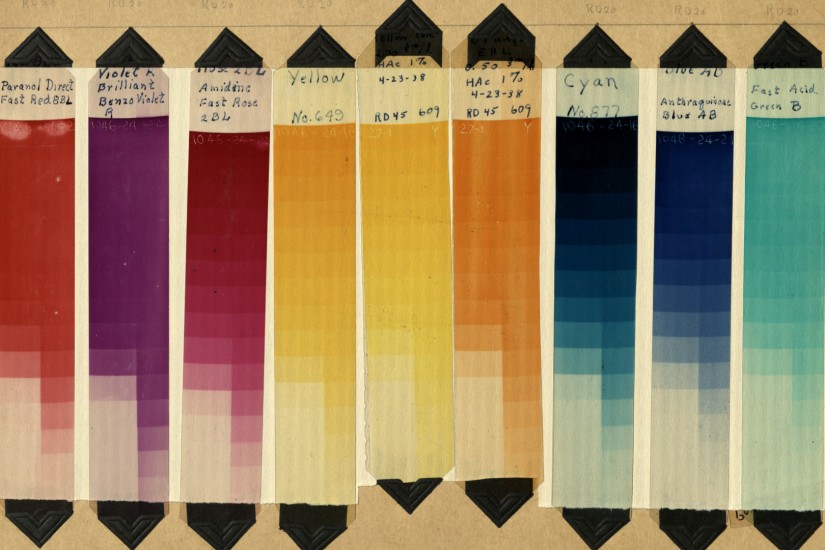Over 40,000 documents related to the early years of Technicolor film are now available to explore online in high-resolution. The George Eastman Museum’s Technicolor Online Research Archive (TORA) was launched this month, with newly digitized technical drawings, photographs, notes, correspondence, and other rare items from the Technicolor Motion Picture Company archives dating between 1914 and 1955.
“The idea was to capture the beginnings of the company and the important research that brought about what we all think of as Technicolor today,” Jared Case, the museum’s head of collection information, research, and access and the lead on the project, told Hyperallergic. “The first six months were dedicated to scanning, which were full weeks of work. We gathered what information we could as we scanned, such as where the original papers were stored, in case we needed to find them again.”
TORA was supported by a 2015 National Endowment for the Humanities grant. While some early film was tinted, toned, or colored by hand, Technicolor used a multi-strip process to more naturally bring color to cinema. And it started years before Dorothy famously stepped into a Technicolor Oz in 1932, with early experiments going back to the 1910s. “Technicolor No. 1” involved a beam-splitting prism and colored filters, and was used to shoot on black and white negatives the now-lost The Gulf Between (1917). “Technicolor No. 2” added a two-print system to the setup, resulting in the groundbreaking The Toll of the Sea (1922). Then an innovative dye-transfer technique, although still based on two colors, resulted in more subtly colored films like The Doll Shop (1929). Finally, “Technicolor No. 3” was developed with a three-strip process, producing the depth of “glorious” colors seen in The Wizard of Oz, as well as films such as Becky Sharp (1935) and The Adventures of Robin Hood (1938).
